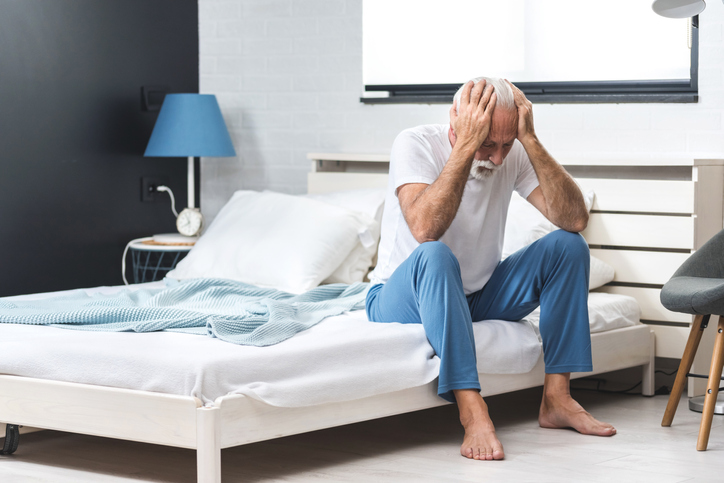Living with Chronic Pain
Chronic Pain and Aging

Is chronic pain more prevalent as people age?
According to the Centers for Disease Control and Prevention (CDC), between 20 and 30 percent of people in the United States experience chronic pain. However, the percentage of adults age 65 or older who experience chronic pain is estimated as high as 60 to 75 percent. Therefore, as people age, chronic pain becomes more prevalent. In addition, younger individuals who have chronic pain often experience increased pain levels as they age.
What chronic pain conditions are associated with aging?
Some of the most common types of chronic pain associated with aging are neck and back pain, nerve pain and joint pain.
- Osteoarthritis can develop or worsen with age. Osteoarthritis involves the breakdown of the cushion of cartilage between bones and joints and is a cause of neck, back and joint pain.
- Tendinitis involves inflammation of the tendons. As people age, the tendons in the body become less elastic and more prone to injury and inflammation.
- Aging also may cause damage to nerves in the body, leading to neuralgia (nerve pain).
- Diabetes, which is also more common in aging adults, can contribute to nerve pain.
How does chronic pain affect individuals as they age?
In addition to age-related conditions that introduce chronic pain, aging can also affect the way people experience chronic pain. As people age, they experience changes in the structure, function and chemistry of the nervous system, which impacts how pain is perceived and felt. Chronic pain in aging adults can impact many areas of life, including activity, cognitive function, sleep and mood.
- Activity
Chronic pain may limit activity in individuals at any age, but it especially impacts aging adults who are more likely to struggle with balance and agility. As a result, aging adults with chronic pain may be less active, which can lead to more pain. - Cognitive function
The Alzheimer’s Drug Discovery Foundation found that people with chronic pain experience memory decline at a 9.2 percent expedited rate compared to those without chronic pain and a 7.7 percent increase in dementia probability compared to those without chronic pain. - Sleep quality
The negative impact of chronic pain on sleep quality is also increased as individuals age. Older adults with chronic pain are twice as likely to report sleep problems than younger individuals with chronic pain. Because aging also leads to a reduction in the body’s melatonin level, which is involved in regulating sleep cycles, sleep issues are more prevalent in the aging population. - Mood
Chronic pain can negatively impact mood, even leading to or worsening depression. This is especially true for aging adults. Researchers from the University of Toronto found that 19 to 28 percent of older adults with chronic pain experience depression.
Can age-related chronic pain be treated?
Many treatments for chronic pain in aging adults are the same as those for younger individuals with chronic pain; however, some adaptations regarding treatment are made for the aging population. Treatments include, but are not limited to, exercise, medication and hot and cold therapy.
- Exercise
Both strength training and cardiovascular exercise can help reduce chronic pain. Cardiovascular exercise increases blood flow, and strength training can reduce joint pain. Strengthening the core is especially helpful for reducing back pain. Low-impact exercises, such as walking, swimming and yoga, may be most beneficial for aging adults. Working with a physical therapist can help individuals learn proper exercise techniques to avoid any aggravation of pain. - Medication
Various medications are used to treat chronic pain conditions, including age-related chronic pain. Aging often impacts the body’s ability to absorb and process medication, potentially reducing its effectiveness or increasing its potency, so individuals should work with their physicians to best regulate their medication. - Heat and ice therapy
Applying heat or ice can also be helpful for age-related pain. For example, applying heat to stiff joints caused by osteoarthritis may help loosen the joints and reduce pain. Applying ice to swollen joints due to tendinitis may decrease inflammation and reduce pain.
Though aging may increase chronic pain, proper treatment allows older adults to continue living active, fulfilling lives.



















